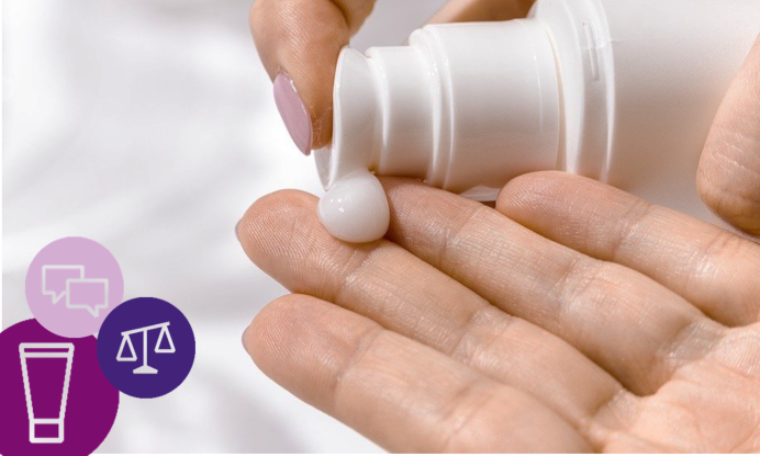
The skin microbiome refers to the collection of micro-organisms (bacteria, viruses, bacteriophages, archea, yeasts and fungi) that naturally are present on an individual’s skin, and may play a role in its health and condition.
As research into the skin microbiome has grown in recent years, many skincare manufacturers have sought to highlight their products’ supposed effect on the microbiome as a unique selling point.
However, despite increasing research, understanding of this highly complex area is still at a very early stage. As such, advertisers should take care to avoid making claims that overstate the benefits of a product for the microbiome and the skin, based on current scientific knowledge.
Ensure the basis of the claim is clear to consumers
Consider what the wording implies as well as what is said explicitly. The ASA recently ruled on an ad for Baby Dove body wash and lotion that stated “Every baby is born with a unique microbiome, a living layer that protects its skin, nourish it with Baby Dove wash and lotion” and “Baby Dove gently nourishes with prebiotic moisturiser”. As the ad referred to the microbiome protecting the skin, and the products being able to “nourish” the microbiome, the ASA thought consumers would understand that they would have a protective benefit on the skin, specifically as a result of their action on the microbiome.
Hold sufficient evidence
The ASA considered that was a breakthrough claim for which the advertiser should hold a particularly high level of evidence. Unilever’s evidence fell short of substantiating their claims for Baby Dove for a number of reasons. In vitro proof-of-concept studies are a crucial part of scientific research, but generally the ASA would expect them to be backed with relevant results in humans. Where feasible, they would expect human studies to reflect the population for which the product is intended.
What does it actually do?
If consumers are likely to understand products will have an impact on the health of their skin, the ASA would expect to see clinical endpoints measuring skin condition that are relevant to consumers, in addition to evidence for the mechanisms theorised as responsible for any maintenance or change in skin condition.
Advertisers should note that many products may contain ingredients that are well established to improve skin condition, such as moisturisers. However, they should avoid stating or implying that effects are due to the interaction of such ingredients with the skin microbiome, unless they hold sufficient evidence that that is the case.
Don’t make medicinal claims
As always, advertisers of cosmetic products should ensure that any claims they make in relation to the condition and general good health of the skin do not cross over into claims to treat or prevent skin disease. These would be classed as medicinal claims and would only be permitted for licensed medicinal products. Further advice can be found here.
For further guidance, see our AdviceOnline entries and if you need bespoke advice on your non-broadcast ads then our Copy Advice team are here to help.
More on
-
Keep up to date
Sign up to our rulings, newsletters and emargoed access for Press. Subscribe now.


